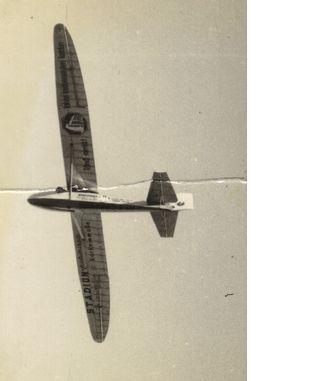
An old photo of “Antti-Jukasta” from the 1930s, complete with advertising for a brewery – “the mark which guarantees the quality of the drink.” On the wings “Stadion pukimissa lentämällä pisimmälle ja korkeimmalle” and “Tämä merkki takaa kudonnaisten laadun”
Gliding in Finland in the early decades of the 20th Century (and private flying for that matter) was closely associated with the Suomen Ilmapuolustusliitto (Air Defence League or SIPL as it was usually abbreviated to). SIPL had been founded in the 1920’s as a kind of Air Civil Guard with local associations (Ilmapuolustusyhdistys) which owned their own aircraft and trained pilots. In the nationalist mood of the day, the task of Suomen Ilmapuolustusliitto was seen as being to arouse the interest of youth in aviation in the spirit of building up the national defences. The building of flying models and glider flying training were arranged for youngsters.
From 1933 on, the Ilmavoimat provided primary training aircraft and instructors to SIPL, with actual flying courses for older youths arranged. The purpose of these courses was to give basic training to to future air force pilots and at the same time, assess suitability for potential pilot trainees. The applicants had to fullfil Ilmavoimat requirements and to commit to finish an Imavoimat officer course if accepted. The aim was to train reserve pilots and funding was provided from the Ministry of Defence, with flying training provided primarily by Ilmavoimat Officers. But flying was not the only activity carried out by SIPL. Aircraft engineering and mechanics were taught, as was radio communications and training was open to both boys and girls. Many of the Ilmavoimat ground-crew and support personnel in the Winter War had their early interest in the Ilmavoimat encouraged by SIPL in the pre-war years and it was a program that paid remarkable dividends. The program grew in popularity and by 1938, the Ilmavoimat regularly loaned Smolik trainers to SIPL for their annual Summer Camp training exercises, as well as regularly providing training aircraft on weekends.
Gliding Clubs grew in popularity through the 1930s
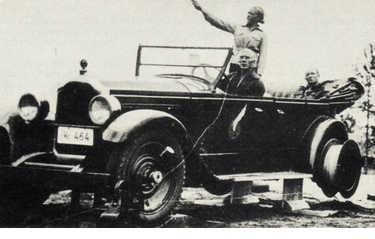
Jamilla: Photo taken in 1937. Miss Aili Heikinaro, christened “Finnish die Hannaksikin” stands in the new winch-Packard holding an outstretched signal flag. She was the first female glider pilot in the country. In the driver’s seat sits Vaasa Glider Club President Gustav Aulin and in the backseat is “Pasi” Jääskeläinen. Note the “guillotine” on the left front wheel.
Simultaneously with interest in SIPL, Gliding Clubs grew in popularity through the 1930’s. Gliding in Finland as an activity began in the 1920’s, but it was in the 1930’s that it really took off. A demonstration of gliding in Finland in 1934 by the German Deutscher Luftsportsvereinin gained a great deal of press attention and helped to popularise the sport and on 17 July 1935 the Jämi Gliding School held its first course. These gliding courses were open only to members of SIPL and as they grew in popularity and other Gliding Schools were opened, SIPL began providing its affiliated associations with glider kits.
Initially, gliding in Finland was organized on the German model – with Gliders launched from the tops of small hills and with flight duration measured in seconds or tens of seconds. With gliders being single seaters, the pilots first flight was a solo flight – which generally (but not always….) resulted in increased confidence. Typical of these Gliding Clubs was the Vaasa Gliding Club, which was founded in the mid-1930’s (and continues to this day incidentally).
The Vaasa Gliding Club acquired its first Winch Car, a Packard, in December 1936. The Packard was an open top car, with one rear wheel replaced with a cable-drum and a “guillotine” fitted on the left front wheel to cut the rope used for towing if necessary. (The Packard was lost during the war).
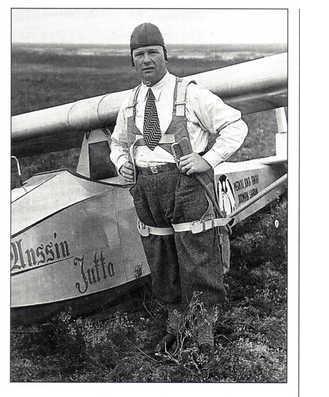
Jämi Instructor and Ilmavoimat Reserve Lieutenant T B Nissinen demonstrates the Vaasa clubs “Anssi-Jukka” Grunau Baby glider in the the 1930’s.
The development of Gliding in Finland proceeded at a rapid paceover 1934-1935 and in 1936, the Club’s first “real” glider, the Grunau Baby IIa was built. This was one of the most famous glider models of the 1930s and was built in large numbers around the world, with some 6,000 constructed worldwide. In Finland, over 30 of the Grunau Baby’s were built. Construction of the first Finnish Grunau Baby Iia started in Vaasa in December 1935, with SIPL organising and paying for all the necessary building materials as well as an Office Administrator to support the work. Volunteers from the Vaasa Club built the Glider which was completed on 27 June 1936 and christened “Antti-Jukaksi,” which also became the symbol of the OH-Anssi-Jukka. Later, the machine was painted with the symbol of OH-VASA 3.
In addition to the Vaasa Grunau Baby, further “Baby’s” were built in Turku, Kuopio, Lahti, and two planes in Helsinki. The Vaasa Grunau Baby was taken to Jämijärvi in the same summer that it was built and started flights there. The machine participated the same year in Air Shows at Turku (6 September), Vyborg (13 September) and in Utti (20 September). Lieutenant T B Nissinen from Viipuri demonstrated aerobatics and Miss Aili Heikinaro was christened the “Finnish Hannaksi Die” by the public after a film of the flights was screened.
Reserve Lieutenant T B Nissinen had started his career as a pilot in Utti in 1924 and flew Maritime Patrol aircraft. He was based from Vaasa from 1932 and in addition to flying for the Ilmavoimat, Lt. Nissinen was involved from the outset in training and supervising flying and glider pilot training at Vaasa. SIPL hired Nissinen as a glider flight instructor in 1935, when his career with the Ilmavoimat ended. In the same year he became acquainted with German Gliding through the award of a German Ministry of Aviation scholarship. He served as director of construction union training courses in 1936-37, when Finland built a large number of Grunau 9 and Grunau Baby machines. Lt. Nissinen was awarded the title “flight captain” and the prestigious Harmon Award for Gliding Development in 1938. Flight Captain Nissinen was director of the Vaasa Gliding Club from 1935-44, and contributed much to the development of Finnish Gliding during that time. After his flying career ended, T.B. Nissinen took the position of Headmaster of the Kymi Oy Högfors engineering school.
That gliding was popular and that these Air Shows were well attended by the public is illustrated in the following, which is a translation of an Article from the North Satakunta Journal of 15 August 1936 together with a series of accompanying photos…..
08/14/1936 North Satakunta – Journal
Last Sunday the Jämijärvi Finnish Air Defence League Air Show was held, with Field Marshal Mannerheim as the guest of honor. The Minister of Defence and a number of other high ranking officers were present. The Air Show attracted a crowd of several thousand people. Large numbers of buses, cars, trucks, private cars, motorcycles and bicycles brought spectators to the Show from Tampere, Pori and Helsinki as well as up from Vaasa. Field Marshal Mannerheim, who had spent the previous night in Tampere and left there at 6am in the morning to follow the battle exercises at the Kankaanpää reservist camp, arrived directly from Kankaanpää. He was greeted by the Satakunta Suojeluskuntapiirin Company Honor Guard, the flags of Finland and the Air Defence League and at the same time a small girl gave to the Field Marshal a bouquet of roses.. Also greeting the Marshal were members of the Air Defence Club executive and central committee members.
As well as the presence of Field Marshal Mannerheim and the Defence Minister, those present included the Air Force \Commander, Colonel Guide, Colonel Oar (yleisesikunnasta), Colonel Vinell of the Kankaanpää Training Centre, the Airfield commander, the provincial military commander, Colonel Siilasvuo, everstil. Kari Koski, Aviation relevant rapporteur, the Minister of Transport and Public Works, Ståhle of Aero Oy, Finland Air Defence Central Executive Council members as well as many Air Force officers. The audience was therefore the most representative and authoritative on aviation matters. After the arrival of the Marshal, the official guests moved to a high sand ridge to watch the Glider Air Show, which mainly consisted of glider pilot students flying a variety of glider types. The Chairman of the Gliding Central Committee acted as guide for the Field Marshal.
The Progam included the first use of a rubber rope in combination with a winch car to get the Gliders airborne. This involves a long rubber rope which the winch machine uses to sling the glider from the ridge into the air. The automobile takeoff, as it is known, is carried out in such a way that the aircraft nose is attached to a long steel cable. This cable is attached to a drum on the rear wheel which us then quickly wound in, giving the glider the initial velocity to ascend into the air. The towing cable length was 800 meters, the towing cable is quickly wound in, the glider ascends and then once in the air above the car the pilots release the wire above the winch machine and continue to fly above the audience. While there were no tow-aircraft available, using this launching apparatus the Pilots were able to achieve as great a height as in the previous years show. The first flight was by Gliding School student Miss Aili Hedstrom (later surname suomalaistettu Heikinaro), a high school student from Vaasa flying the Kuopio Air Defence Association Grünau 9. She flew beautifully above the ridge and then descended back to the place of origin, making beautiful curves above the landscape. This flight, like everyone else’s, was well received by the spectators and the Pilot effortlessly landed at the forest edge.
Other flights followed. The next flight, which was fairly long, was carried out in the Satakunta Flying Club machine. The Southern Finland Air Defence League presented to the public an early trainer built by the association, the “Kassel 12”, which is a relatively “old fashioned” model. The Helsinki air defense built Grünau Baby II flew and of course soared the highest, two times more than a basic trainer. Other gliders and pilots flew in Grünau 9’s and Grünau Baby II’s and the last flight was by glider flight chief instructor TB Nissinen who performed an aerobatic show with beautiful looping which attracted a round of applause from the spectators, especially as his starting point for the aerobatics was only 300 metres. The audience viewed the entire show with pleasure, especially as it was performed not by foreign glider pilots but by all Finnish pilots and Finnish enthusiasts who are all volunteers.
Field Marshal Mannerheim, as he left the Show, was given a triple-hurrah by the audience, who then cheered him as he departed. The Air Show went according to plan in every way and the weather was ideal. Catering was provided by the Jämijärvi Lotta women, whose dishes went like hot cakes.
What follows is a series of 40 odd Photos from an Air Show that I believe is the one reported in the article above from the North Satakunta Journal of 15 August 1936. The captions for the photos are apparently those written into the original photo album that these were scanned in from. For anyone interested, here’s the link to where I sourced the photos from: http://www.flightforum.fi/forum/index.php/topic,84677.0.html, although the photos themselves cannot now be seen there (“not found or removed”)
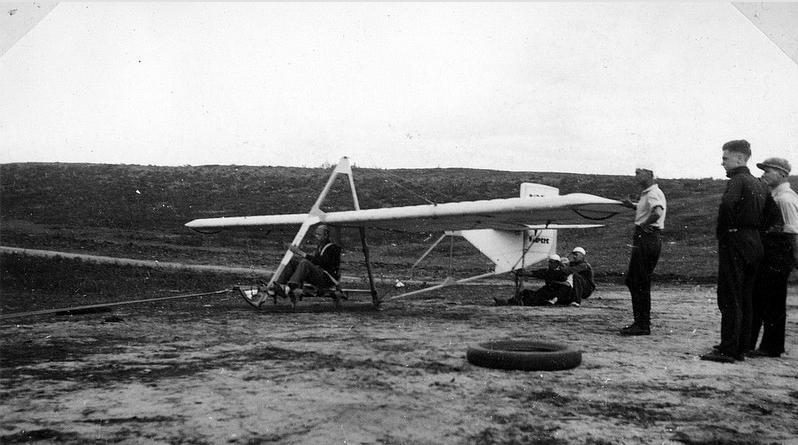
Valmiina – “Ready”
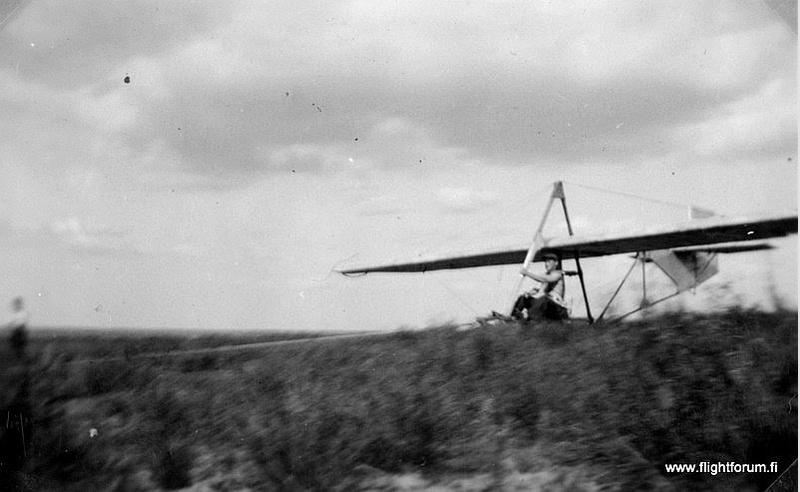
Veto! – “Pull”
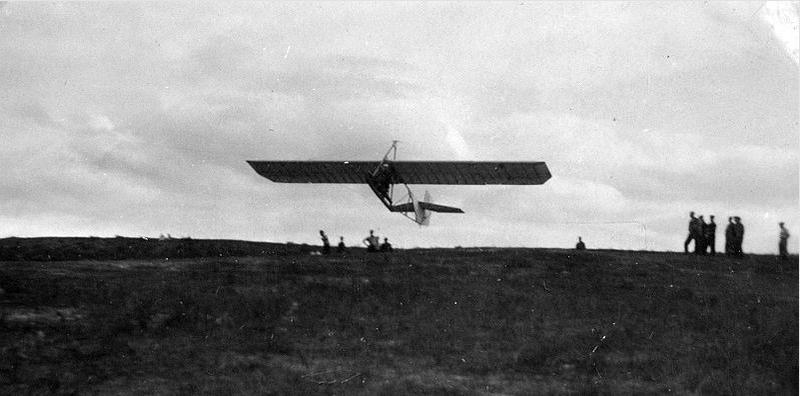
Irti! – “Off”
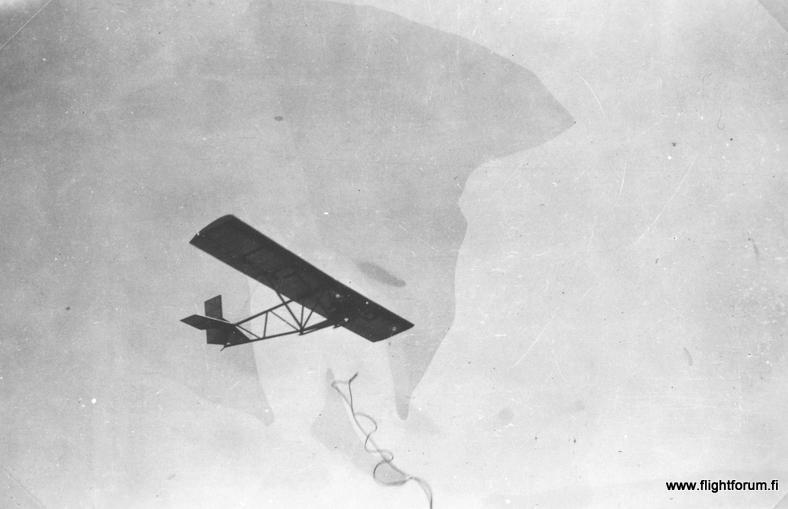
Köysi irtoaa – “The rope comes off”
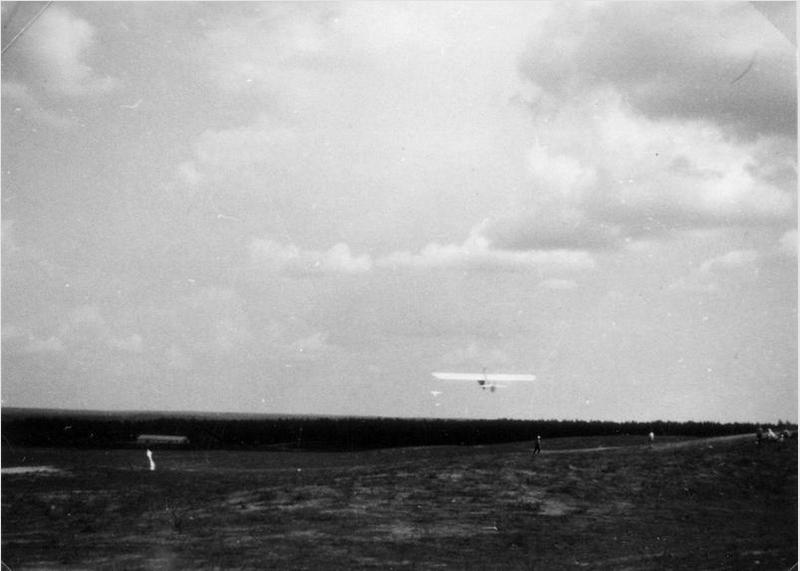
Liito – “Glide”
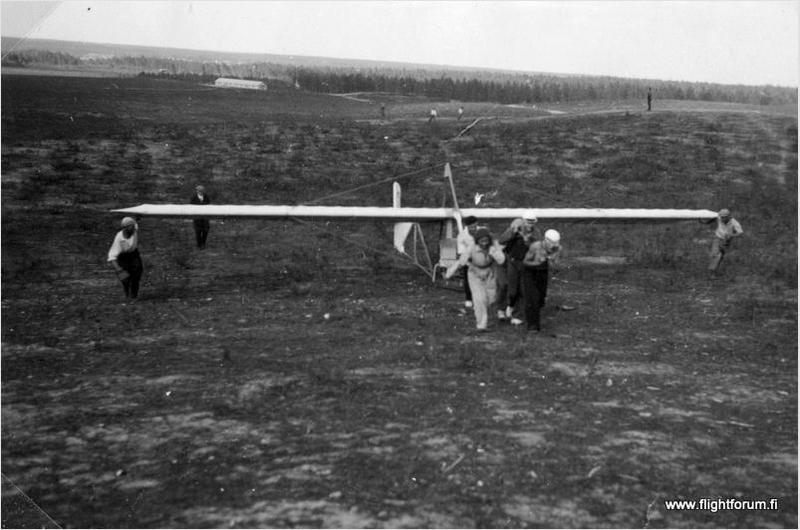
Hinaus takaisin – “Pulling the glider back”
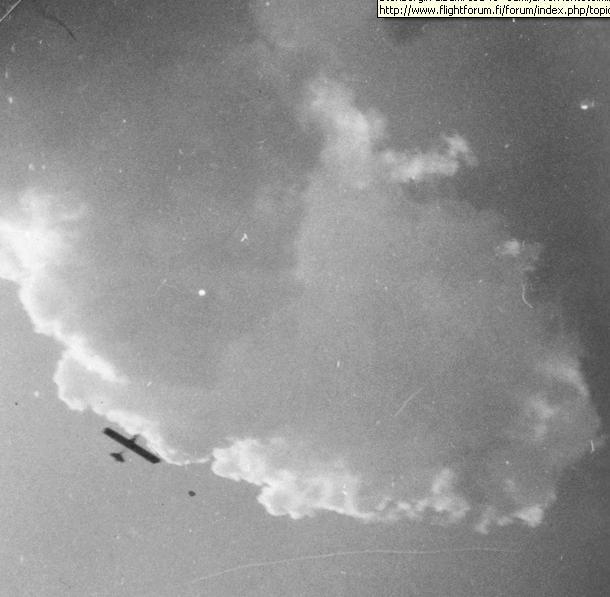
This photo had no caption…..
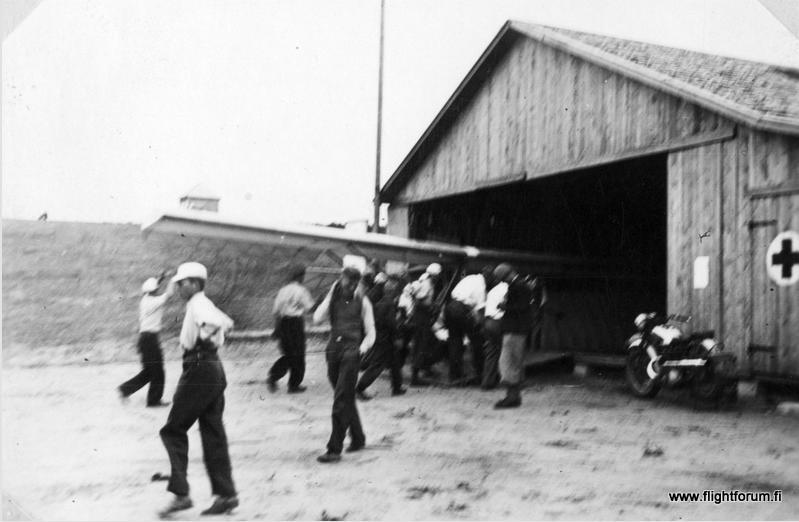
Kone suojasta – Protection for the Glider
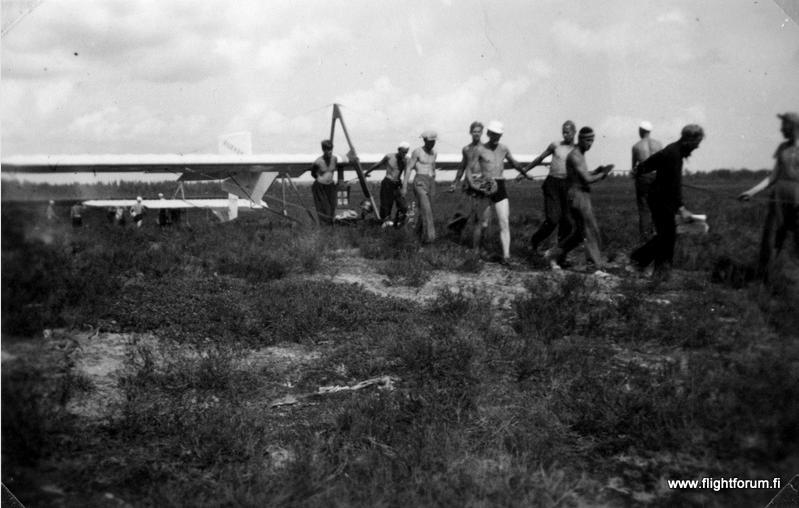
Hinaus starttipaikalle – “Towing to the Launching Point”
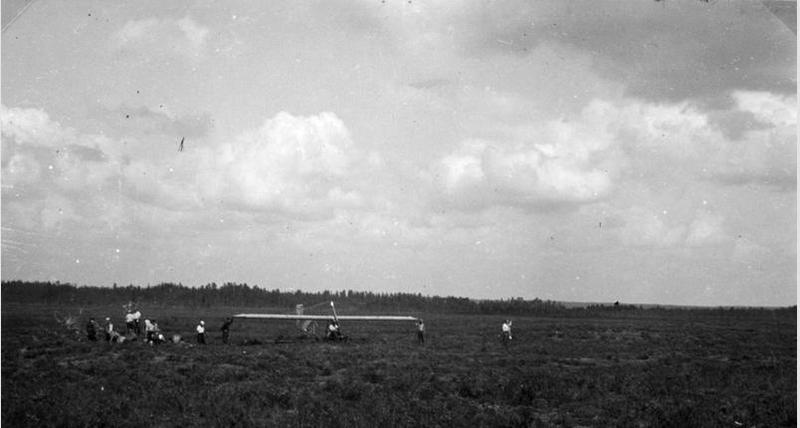
Valmiina! – “Ready!”
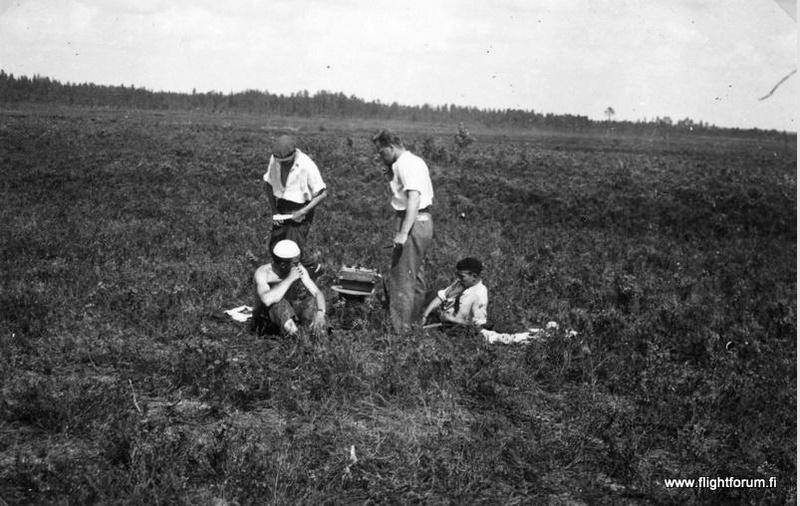
Puhelin ilmoitus hinaus paikalle – Telephone notification at the towing scene
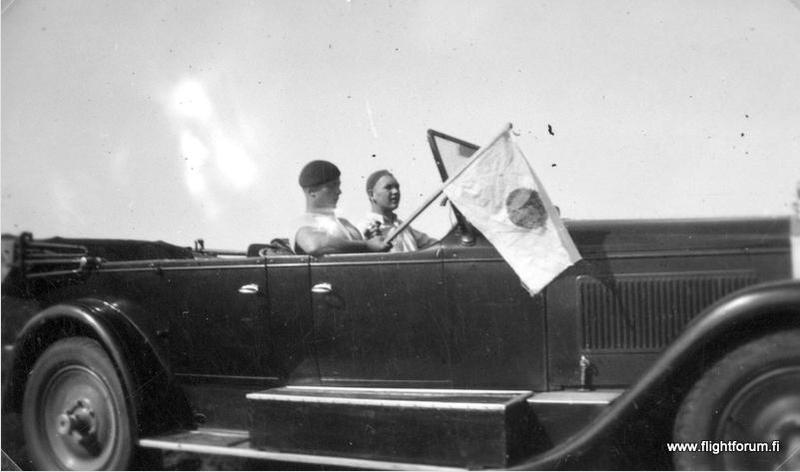
Winch Car with the signal flag
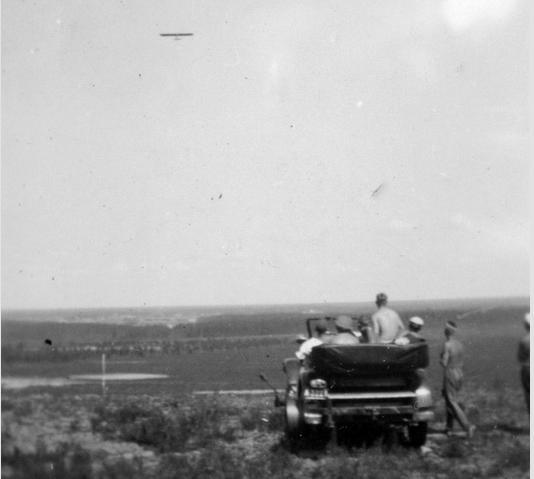
Hinausta – Towing
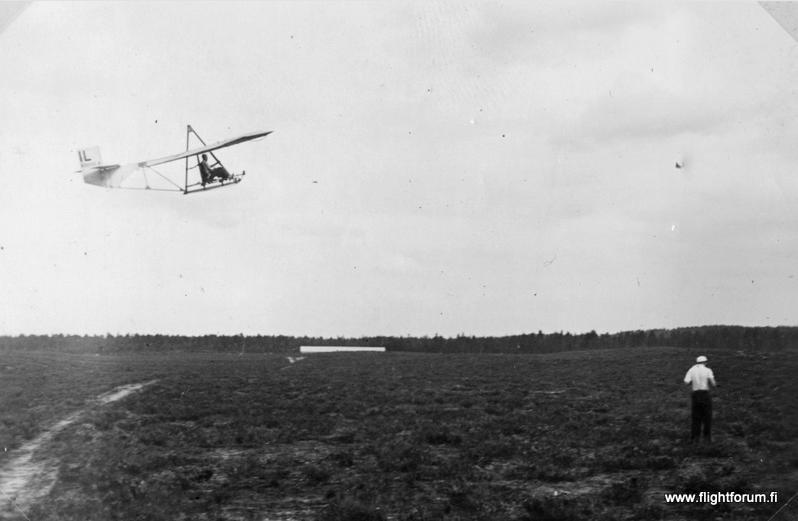
Nousu alkaa! – Liftoff
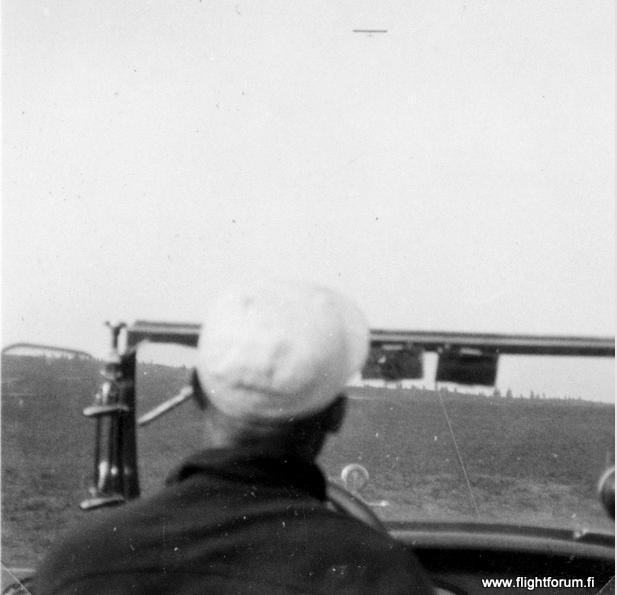
Silmä tarkkana – Watching closely
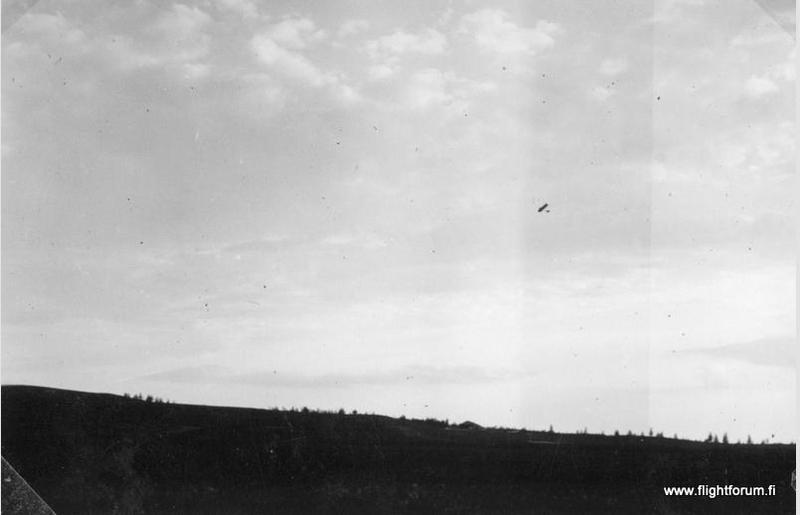
Kone nousemassa – Glider is on its own…
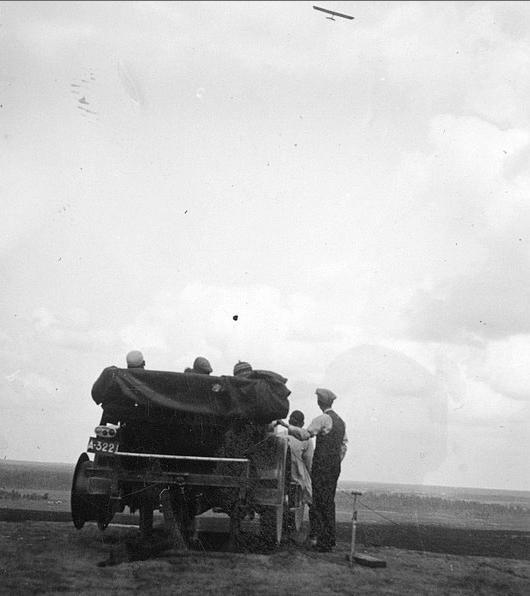
Lähellä lakipistetä – In the act of Gliding
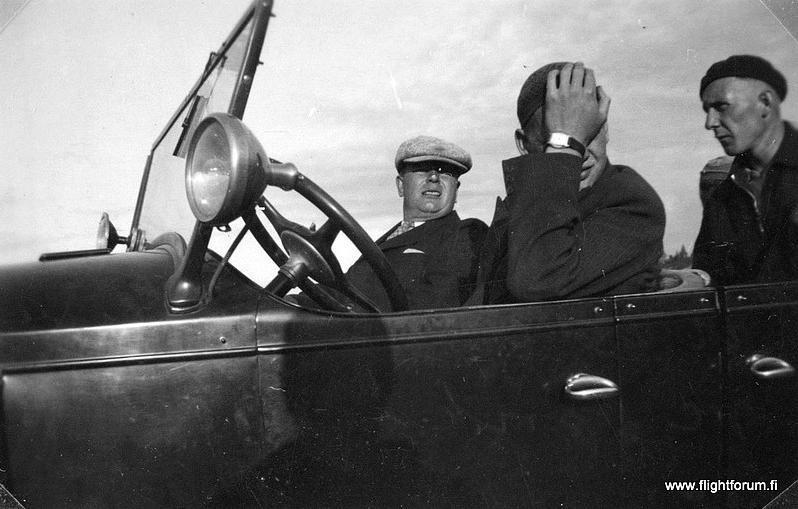
This photo had no caption
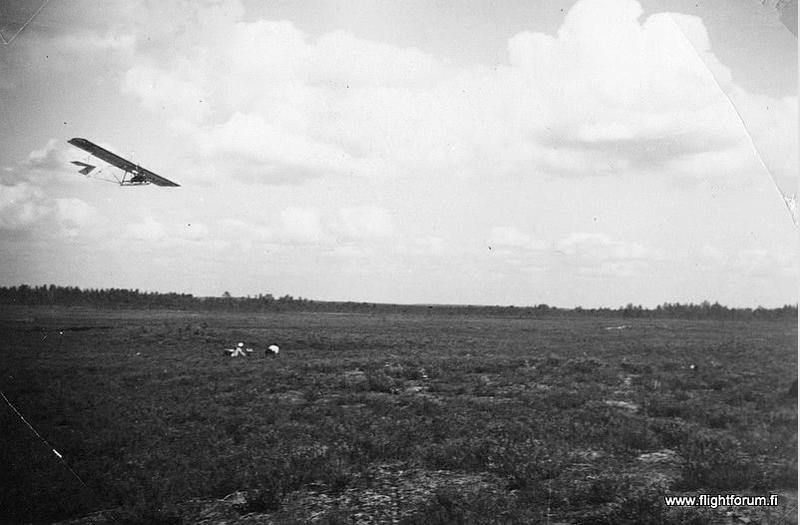
This photo had no caption
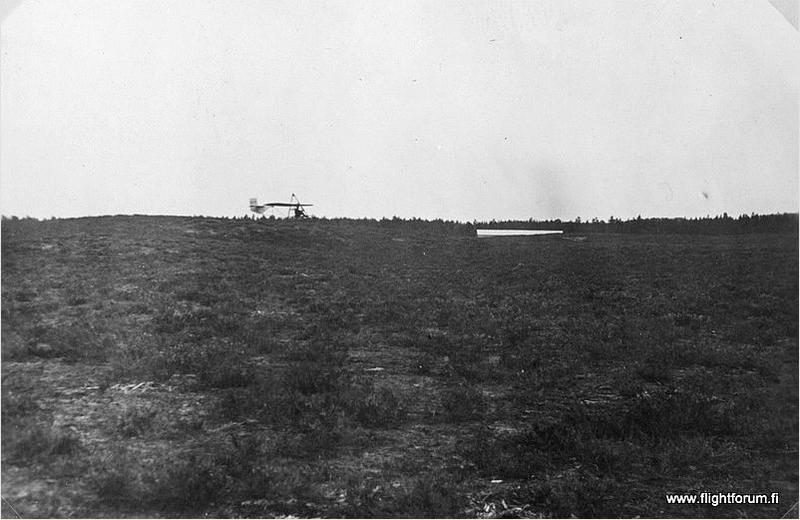
Lasku – About to launch
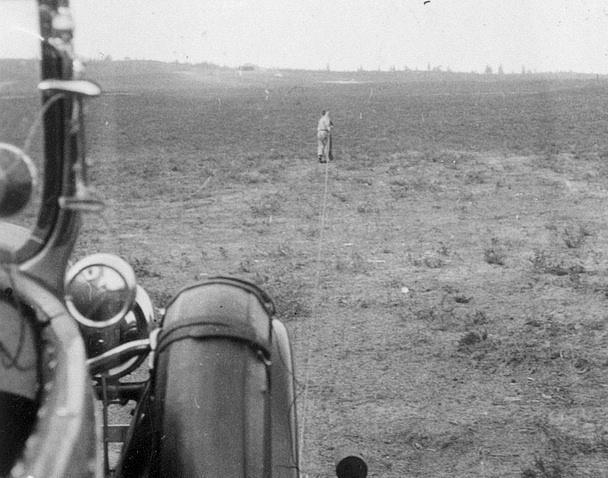
Vaijeri vedetään takaisin – “The Wire is Pulled back”
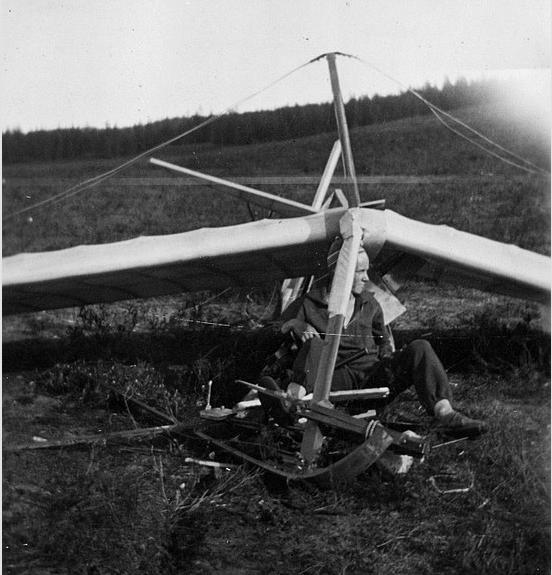
Sattui sitä vahinkojakin, konerikkoja, mutta muuten vaarattomia – Crashes happen, the Glider gets broken but otherwise no harm
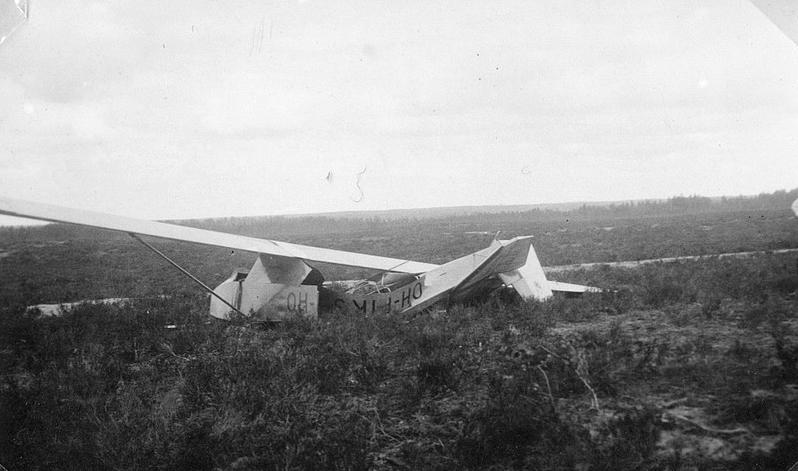
Sattui sitä vahinkojakin, konerikkoja, mutta muuten vaarattomia – Crashes happen, the Glider gets broken but otherwise no harm
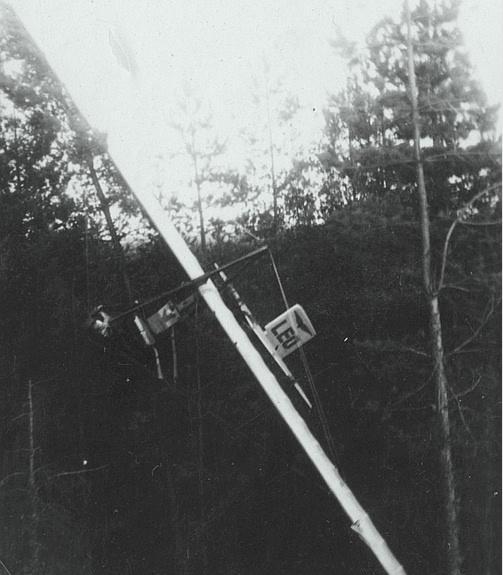
Sattui sitä vahinkojakin, konerikkoja, mutta muuten vaarattomia – Crashes happen, the Glider gets broken but otherwise no harm
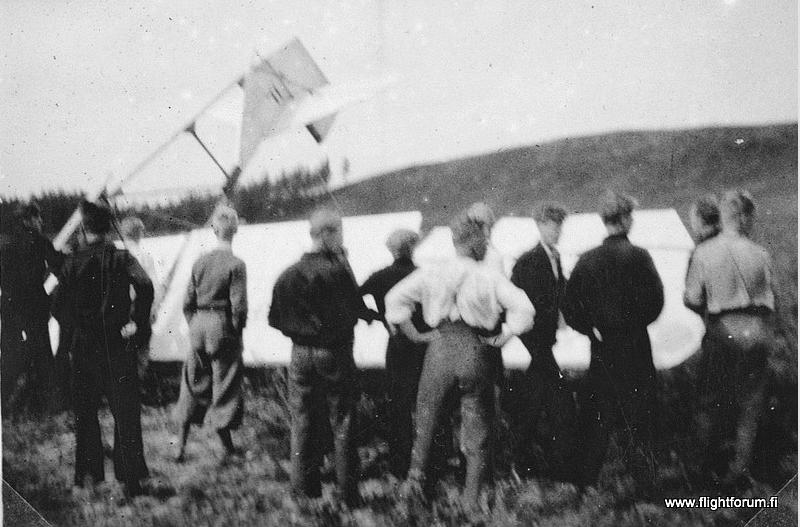
Sattui sitä vahinkojakin, konerikkoja, mutta muuten vaarattomia – Crashes happen, the Glider gets broken but otherwise no harm
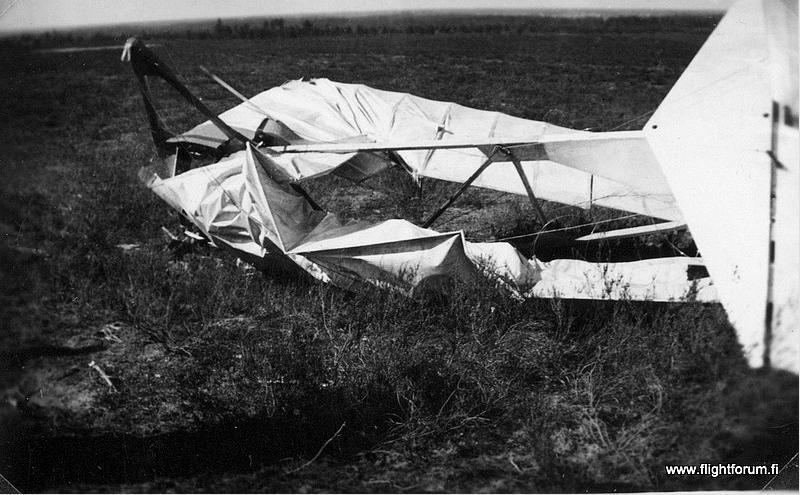
Sattui sitä vahinkojakin, konerikkoja, mutta muuten vaarattomia – Crashes happen, the Glider gets broken but otherwise no harm
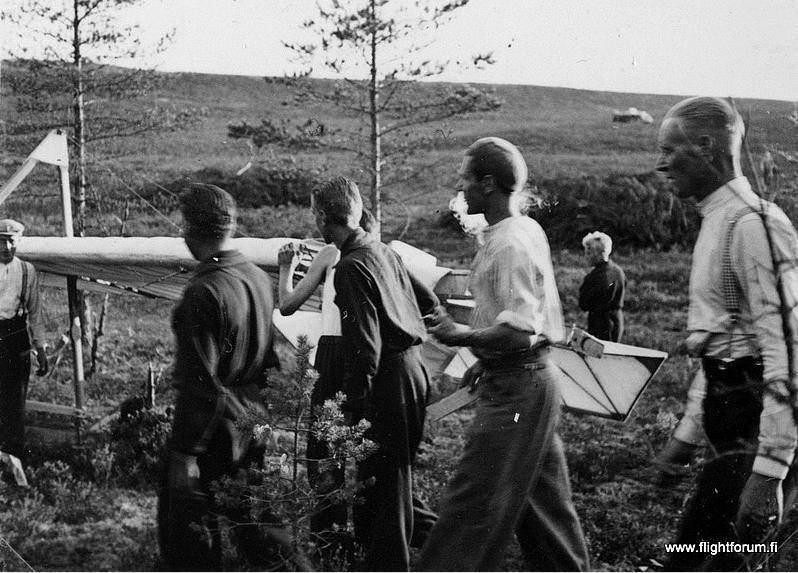
Sattui sitä vahinkojakin, konerikkoja, mutta muuten vaarattomia – Crashes happen, the Glider gets broken but otherwise no harm
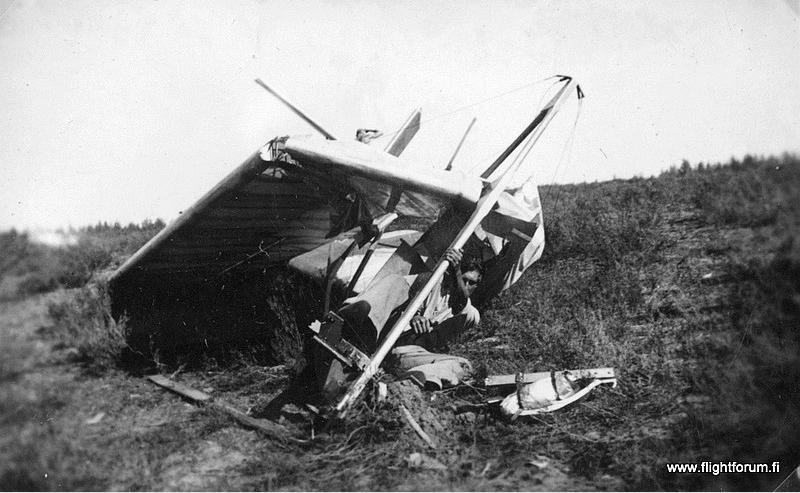
Sattui sitä vahinkojakin, konerikkoja, mutta muuten vaarattomia – Crashes happen, the Glider gets broken but otherwise no harm
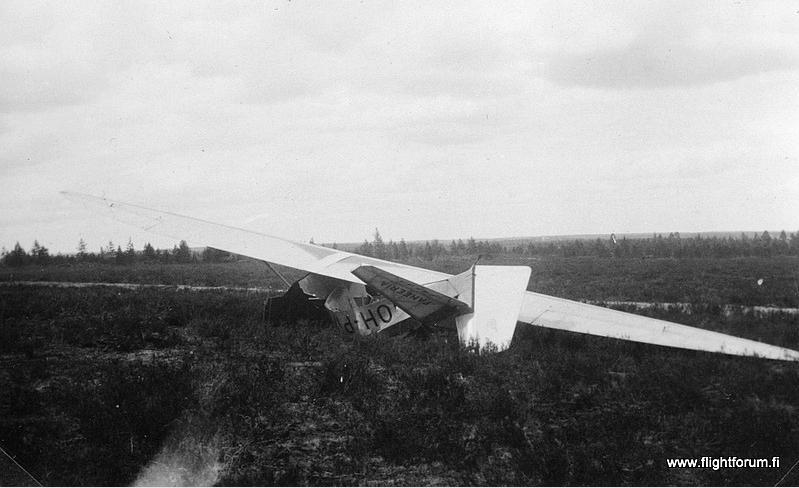
Tässä on PIK:n Grunau Baby OH-PIK3, joka saatiin kesäkuun 1936 alkupäivinä Jämille. Eräs apuopettaja rikkoi koneen rungon 13. lennon päätteeksi.- This is the Grunau Baby PIK3-OH, which was the beginning of June, 1936 Distance to Jämi – one of the auxiliary instructors and teachers broke the fuselage at the end of the flight.
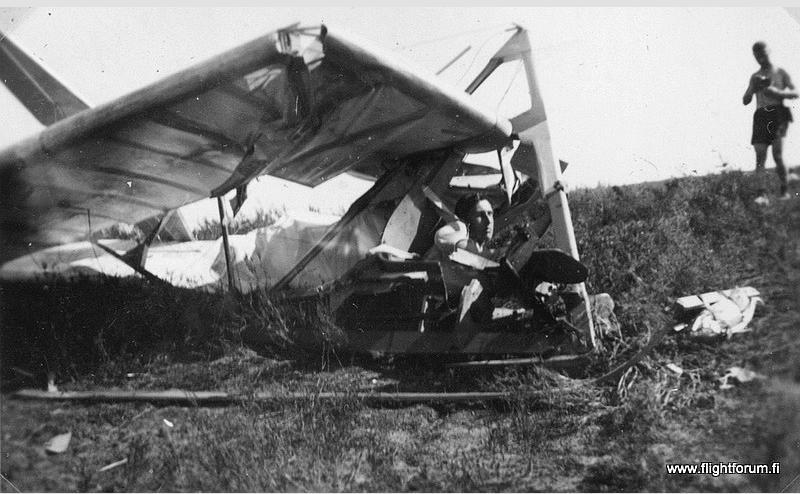
Ittekin tein Komar’illa “kaputin”, nokka poikki + nyrjähtänyt nilkka – The Glider is “kaput” – but the pilot only has a sprained ankle
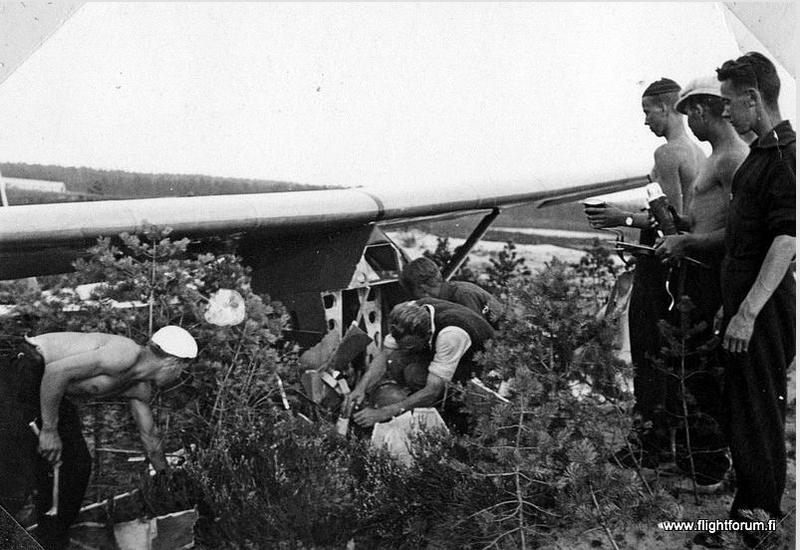
Ittekin tein Komar’illa “kaputin”, nokka poikki + nyrjähtänyt nilkka – The Glider is “kaput” – but the pilot only has a sprained ankle
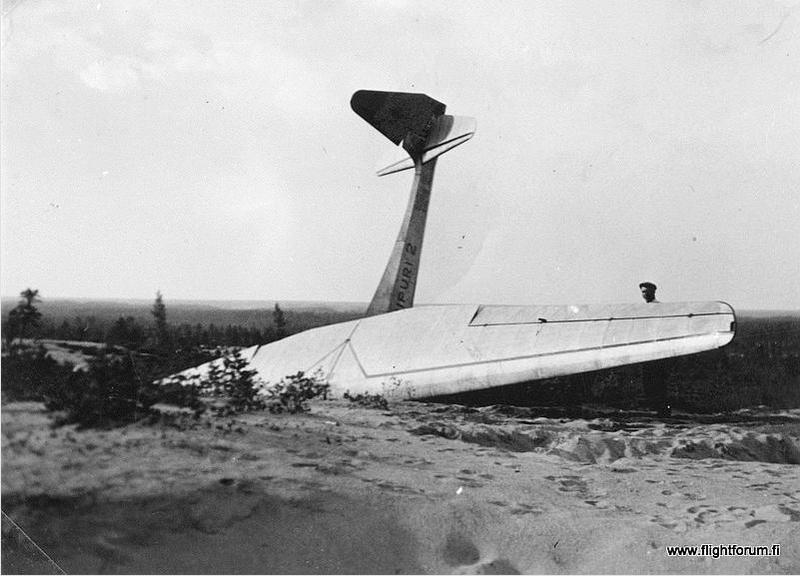
Another crashed glider
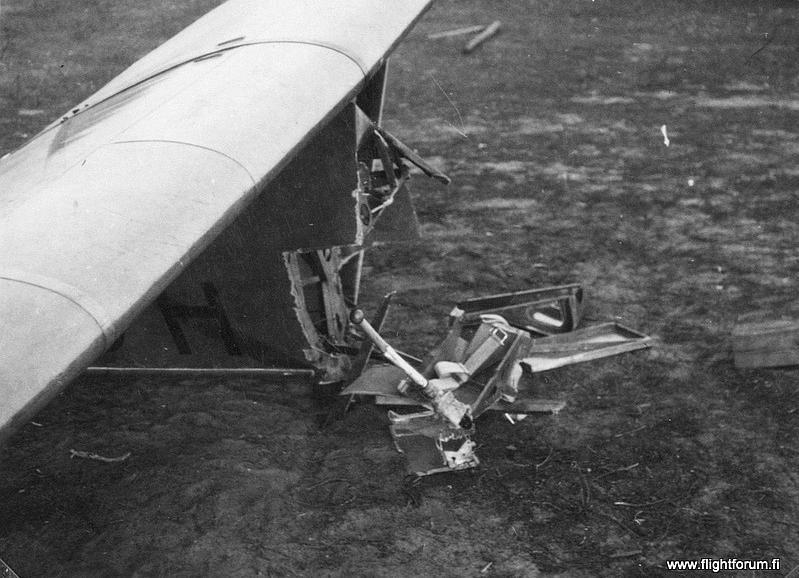
Another crashed glider
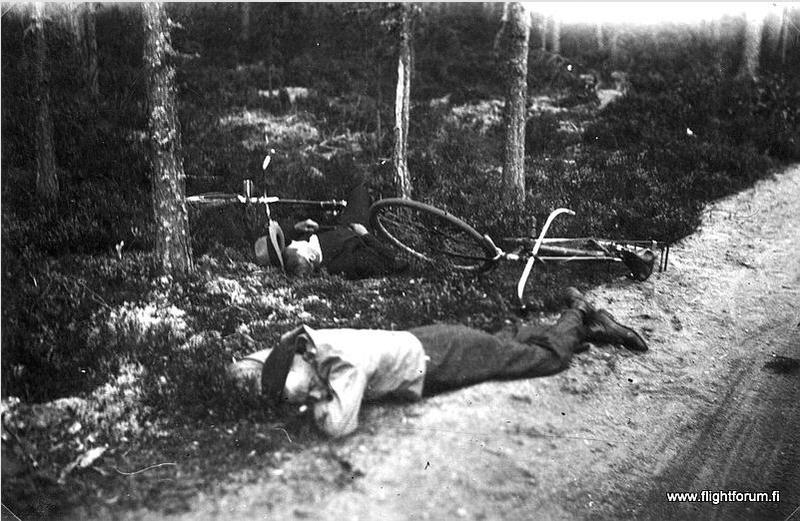
Sattui yleisöllekin “vahinkoja” välistä! Muutamat “väsyneet matkamiehet” virvoitettiin paloruiskulla ja herätys oli hölmöhkö, mutta pystyttiin kuitenkin kotimatkalle – “Damage” also happens to the general public and gliders alike! Some men are “tired of traveling” – but the fire alarm was given and with the help of a good squirt of water, they were assisted on their way home….
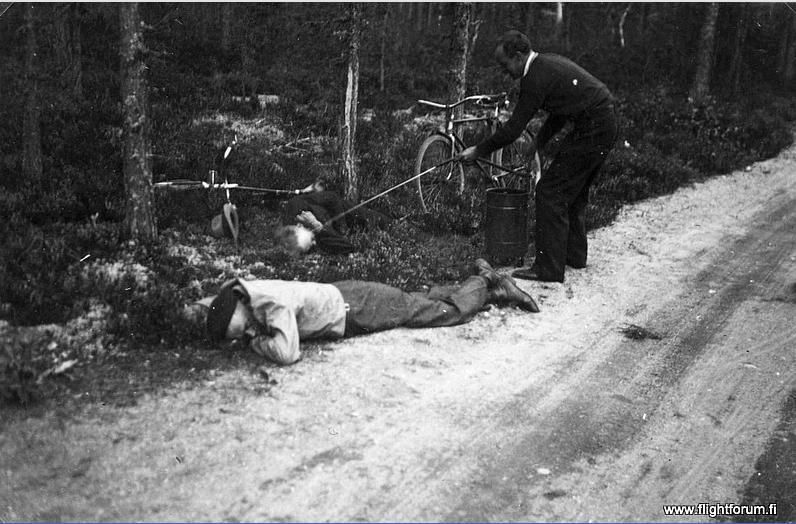
Sattui yleisöllekin “vahinkoja” välistä! Muutamat “väsyneet matkamiehet” virvoitettiin paloruiskulla ja herätys oli hölmöhkö, mutta pystyttiin kuitenkin kotimatkalle – “Damage” also happens to the general public and gliders alike! Some men are “tired of traveling” – but the fire alarm was given and with the help of a good squirt of water, they were assisted on their way home….
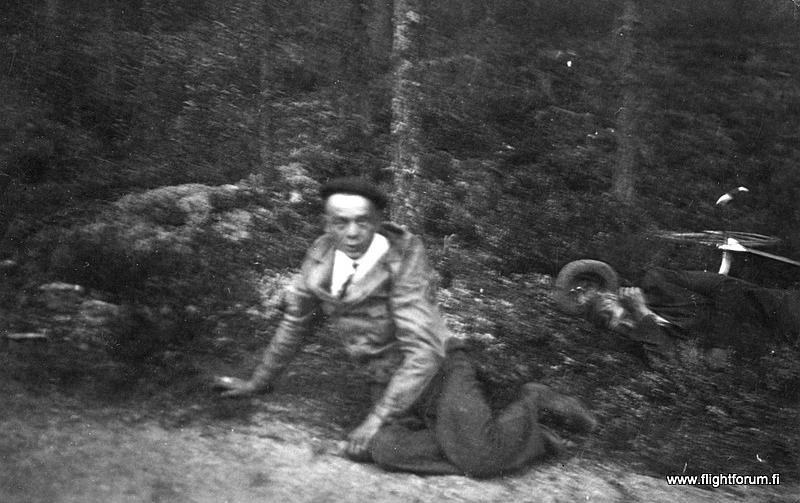
Sattui yleisöllekin “vahinkoja” välistä! Muutamat “väsyneet matkamiehet” virvoitettiin paloruiskulla ja herätys oli hölmöhkö, mutta pystyttiin kuitenkin kotimatkalle – “Damage” also happens to the general public and gliders alike! Some men are “tired of traveling” – but the fire alarm was given and with the help of a good squirt of water, they were assisted on their way home….
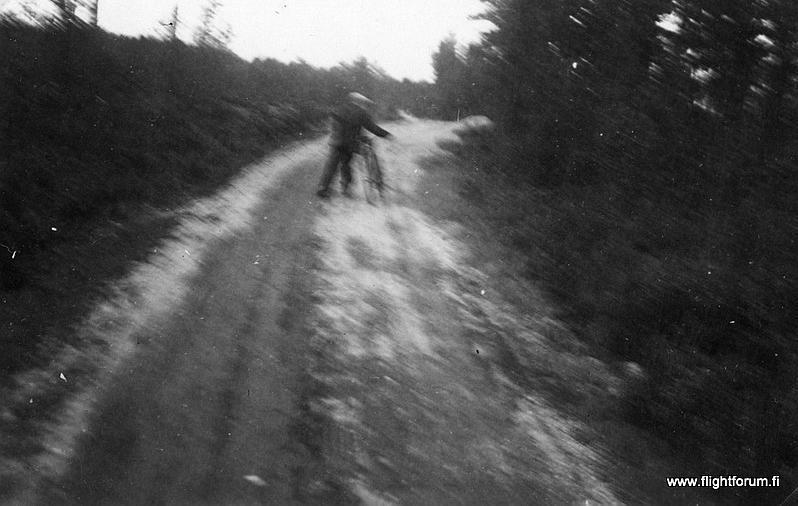
Sattui yleisöllekin “vahinkoja” välistä! Muutamat “väsyneet matkamiehet” virvoitettiin paloruiskulla ja herätys oli hölmöhkö, mutta pystyttiin kuitenkin kotimatkalle – “Damage” also happens to the general public and gliders alike! Some men are “tired of traveling” – but the fire alarm was given and with the help of a good squirt of water, they were assisted on their way home….
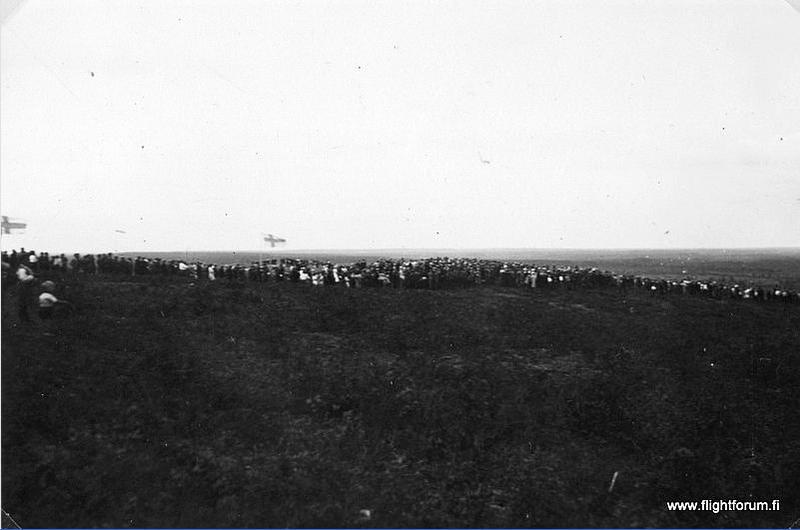
Se suuri lentonäytös “Marskin” läsnäollessa – It is a great Air Show in the presence of the Marshal
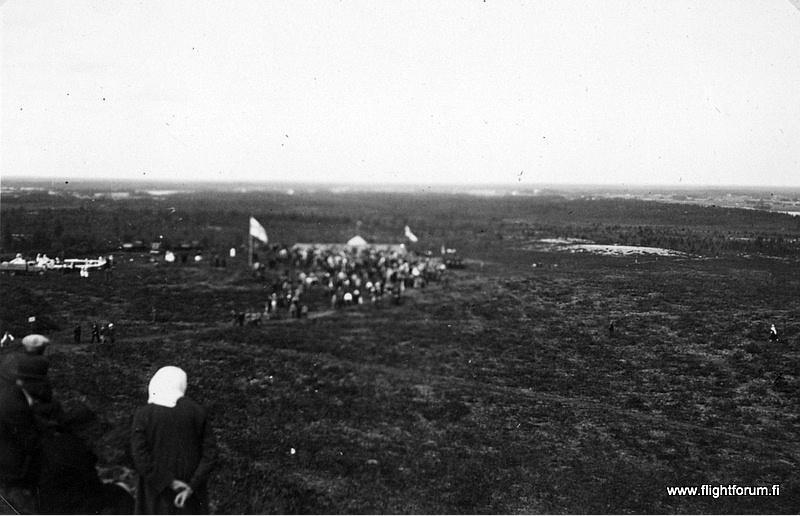
Se suuri lentonäytös “Marskin” läsnäollessa – It is a great Air Show in the presence of the Marshal
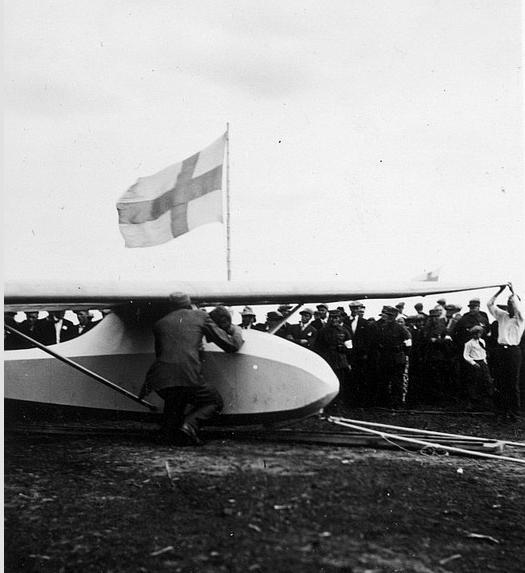
The Marshal ……
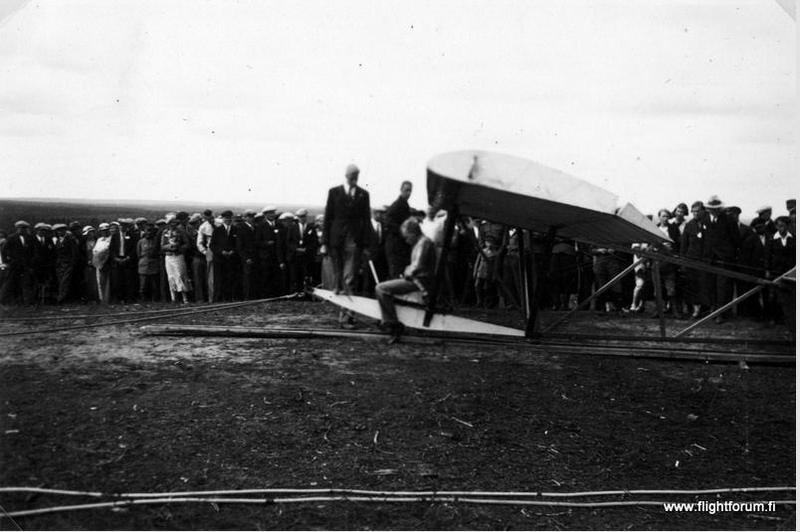
The Marshal ……
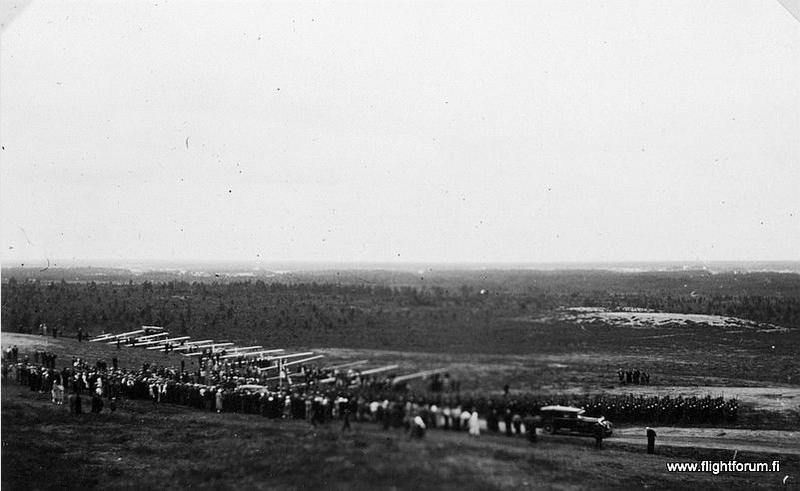
The Marshal ……
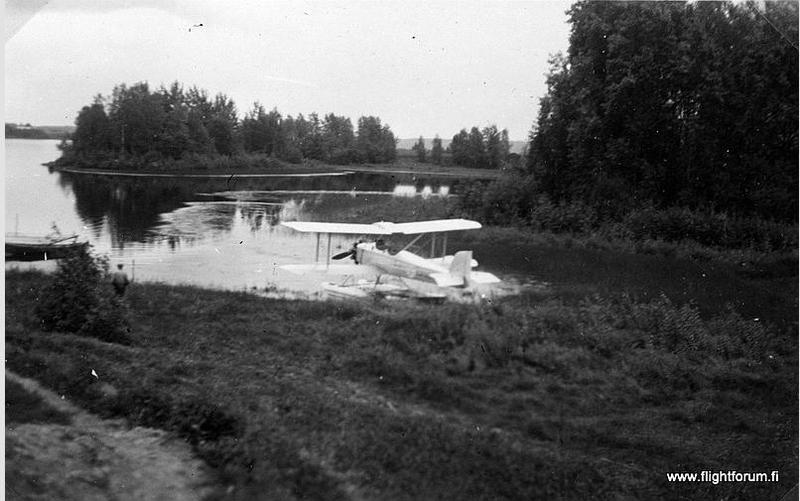
Viimeisen kuvan kone lienee Sääski – The last picture of the machine is probably Sääski.
 Copyright secured by Digiprove © 2013 Alternative Finland
Copyright secured by Digiprove © 2013 Alternative Finland


